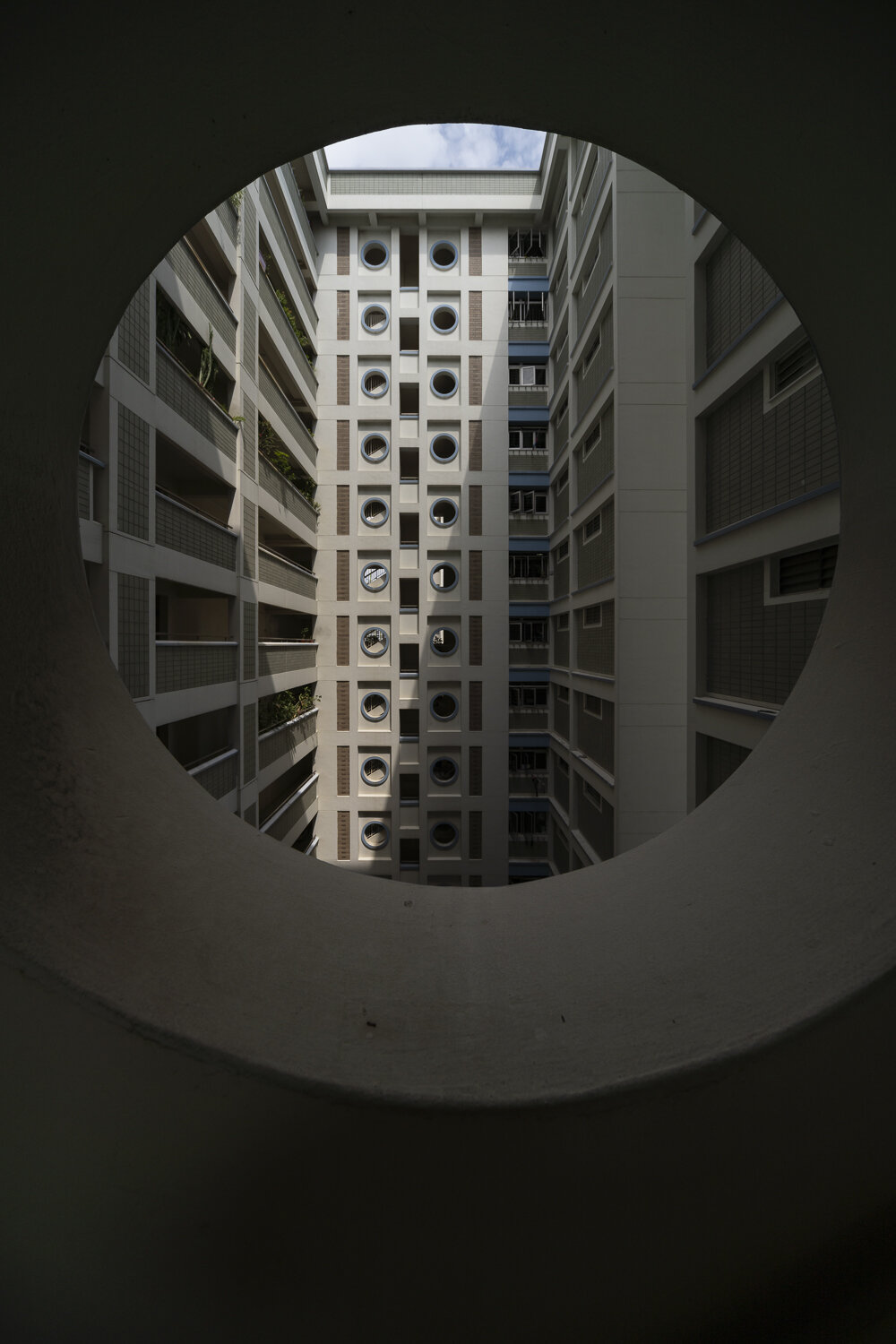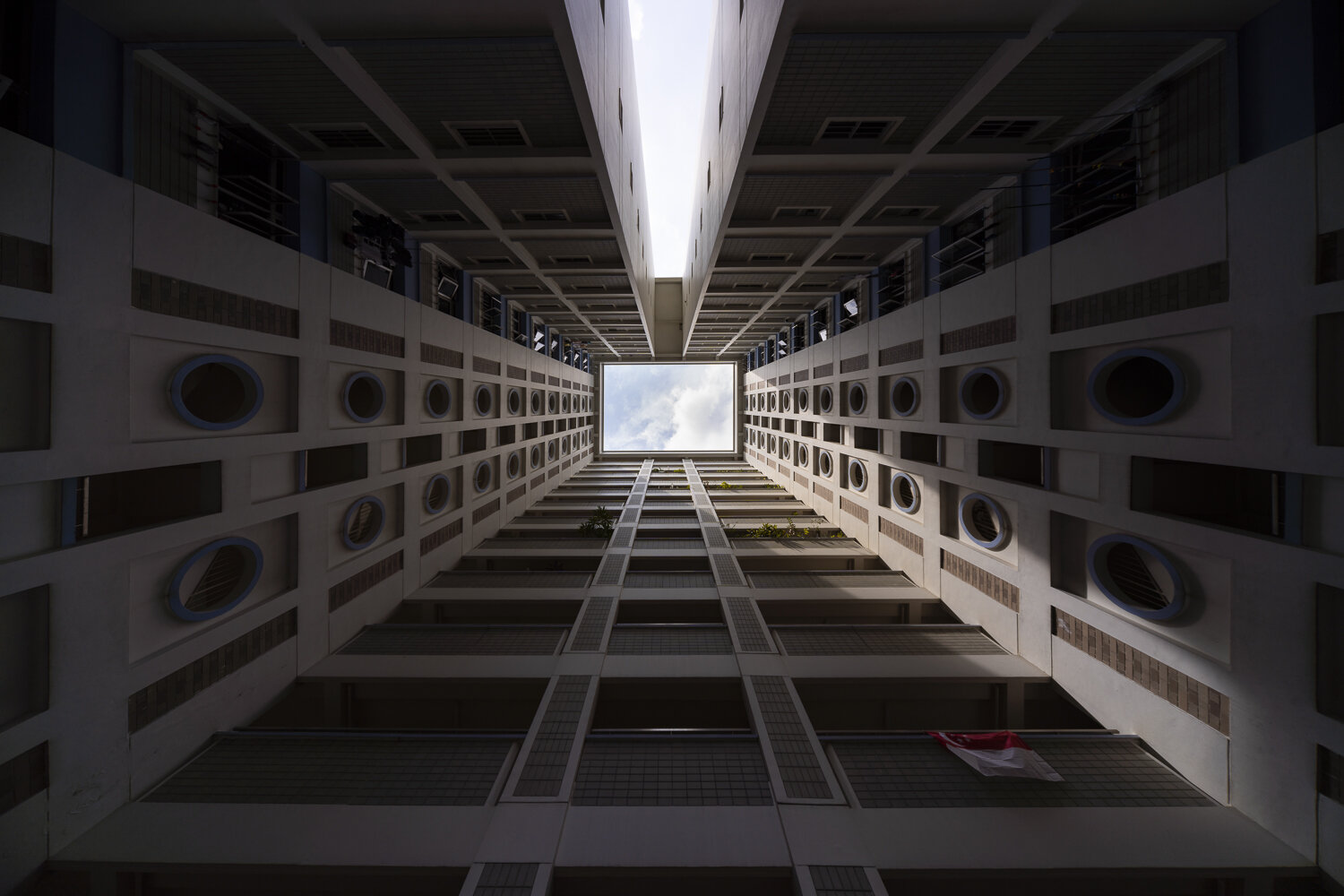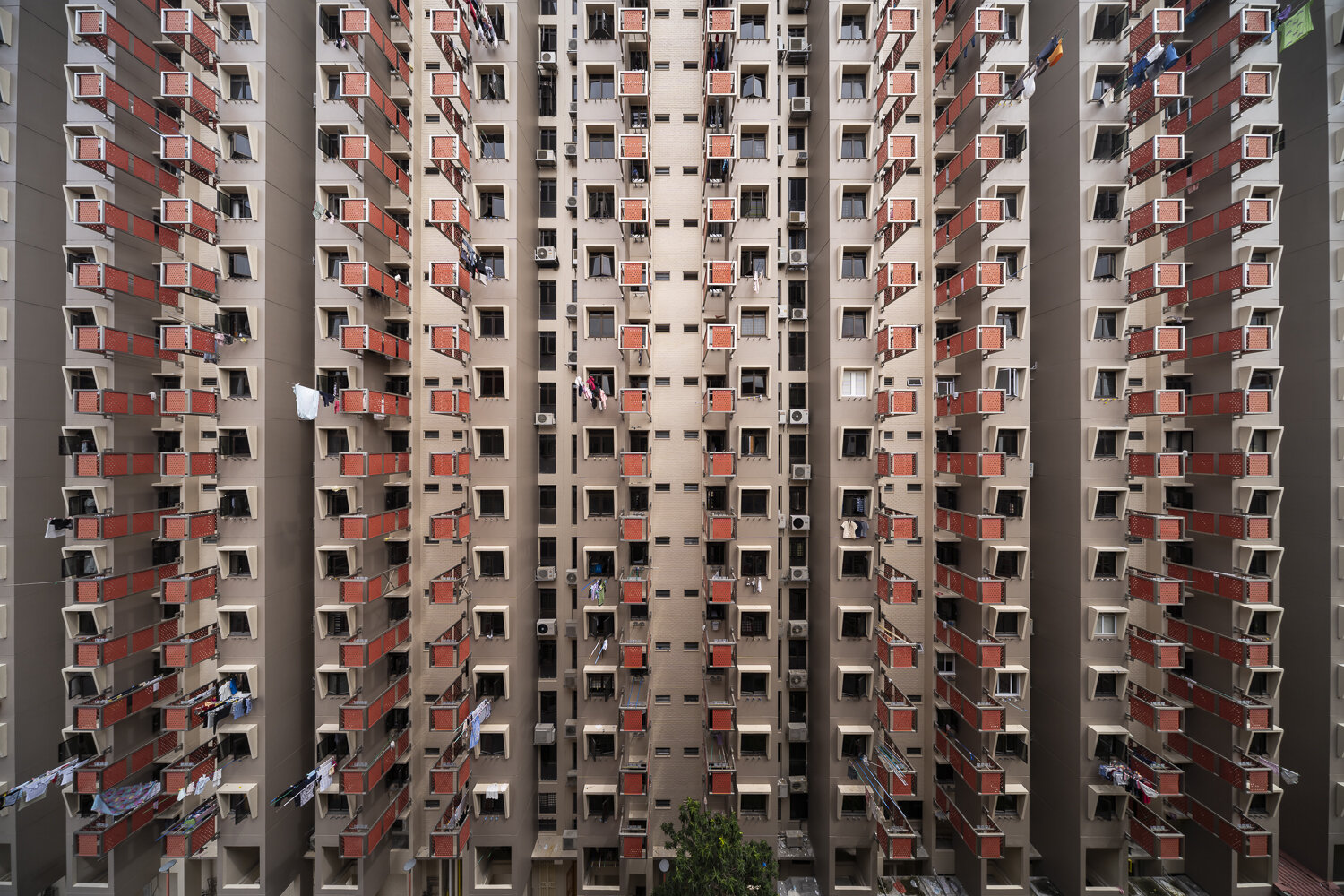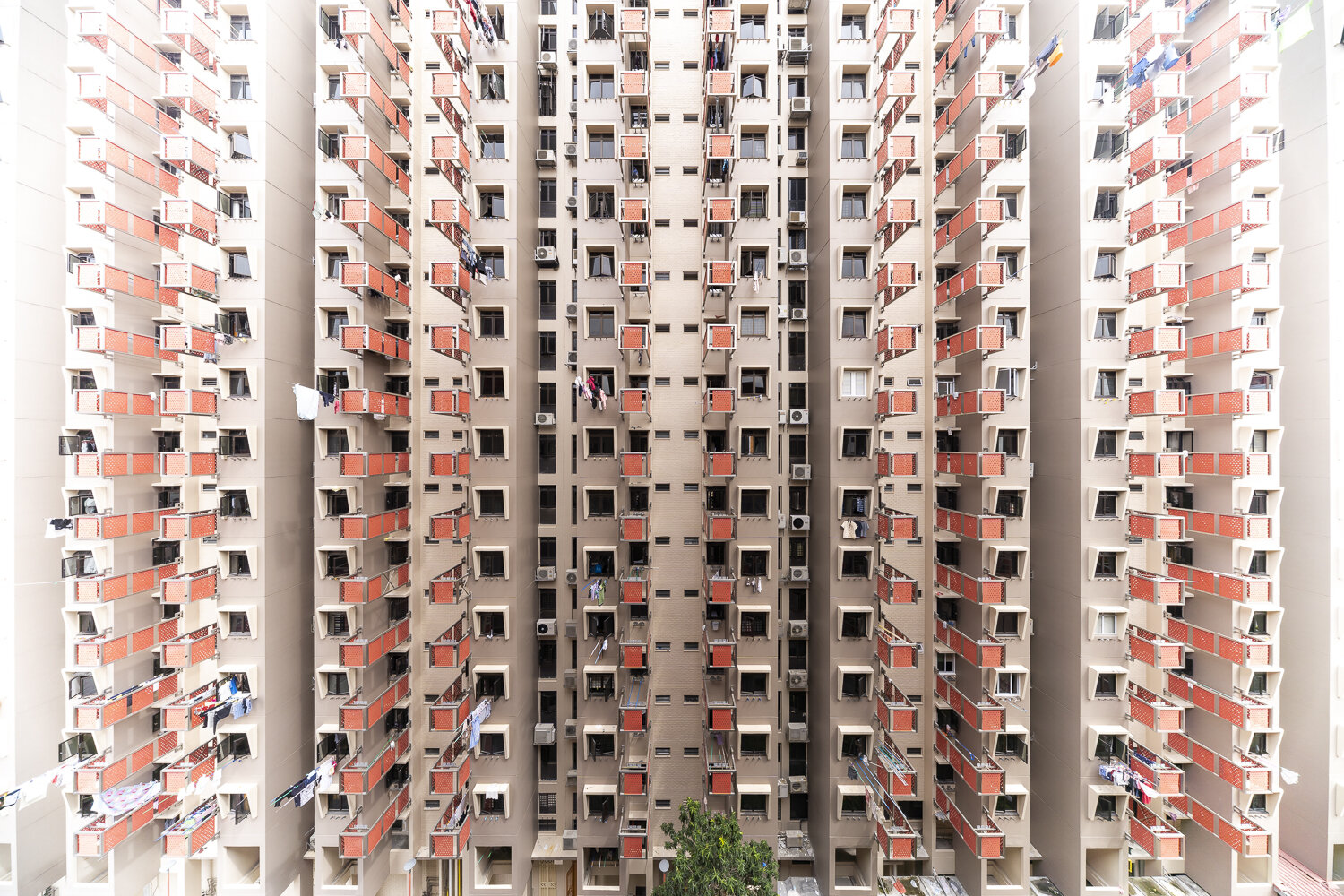Shooting architecture in Singapore presents some challenges, as buildings are built very close to each other. As such, ultra-wide angle lenses are desirable.
Such lenses however, often produce images that suffer from distortion. Best case scenario will be barrel distortion, and in the worst case scenario, what we call moustache distortion.
In recent years however, lens manufacturers have attempted to produce ultra-wide angle lenses that have minimal distortion, or at least distortion that can be corrected easily with the click of a button.
As someone who shoots architecture, I have invested a fair mount in ultra-wide/wide angle lenses, and the ones that get the most use would be the 17mm and 24mm tilt-shift lenses from Canon, adapted to my Sony cameras.
Having said that, there is still space in my bag for ultra-wides, and for a time, the widest ultra-wide I have owned was the Voigtlander 10mm Hyperwide. This lens is a rectilinear lens, meaning that what is supposed to be straight will remain straight. And for the most part, it is a great lens except for one small problem. The lens is soft at the edges, even when stopped down to its ideal f/11 and I simply put up with that weakness. There have been several lenses that were released over the years that tries to fill that niche, but they had other problems, such as being too big and unwieldy or suffered from distortion.
Recently, Venus Optics released a 9mm ultra-wide that has become the widest rectilinear lens for mirrorless cameras. The full name is Laowa FF-RL 9mm 5.6 W-Dreamer.
I first read a review by Phillip Reeves on the lens and knew that there were some issues but also does not have some of the problems that plagued the Voigtlander 10mm Hyperwide. My key concern were that 1. The lens does not have distortion that cannot be corrected and 2. There is no drastic drop in sharpness at the edges.
With ultra-wide lenses, vignetting and distortion are common and usually, there will be lens profiles available, unless it is a fully manual lens with no electronic contacts, like in this instance. Thankfully, Venus Optics has a lens profile available for this lens. It is not the best, I will admit. Distortion is mostly fixed, other than for extremely near objects where there is still very mild distortion, but the fix for vignetting is terrible. It overdoes the brightening and requires some dialing back of the vignetting control in Lightroom. In my various images, when I apply the lens profile, I will dial the vignetting control back from the default 100 to between 20-40. That has worked well for me so far, and hopefully, Adobe Camera Raw will release a proper lens profile for this lens.
Use of filters. For ultra-wide lenses, the use of screw in filters is not possible because of the bulbous front element. However, there are solutions for slot in square and rectangular filters, using a filter holder. These filter holders are usually custom designed for each type of lens, and this is no exception. H&Y has worked with Venus Optics to design a magnetic filter holder, and you can use one square or rectangular filter with this lens. Friends have reported using 2 filters with some vignetting (expected). The good thing about this is, you can use this with 100mm filters, rather than 150mm ones. The downside, you need to carry one additional filter holder just for this lens.
The filter holder was part of a special promotion from the store I got the lens from and also includes a Lee 0.75 (2.5 stops) soft grad filter with H&Y magnetic frame (frame not installed so you will need to install it yourself), though I do not see myself using that filter.
I have not used this lens extensively, as it is a focal length that is challenging to use but comes into its own when used in the right conditions. Ultra-wides require for the most part, foreground interest to lead your eye into a frame that can be very empty otherwise.
There are some pros and cons to this lens
Pros:
1. Sharp at f/8, getting slightly sharper at f/11.
2. Small form factor
3. E-mount version has an added focusing tab as often seen on Leica lenses, which is surprisingly useful.
4. Can be used with 100mm filters, with dedicated filter holder.
Cons:
1. Severe vignetting. Lens profile available from manufacturer but does a terrible job of vignetting control. Can be manually dialled back.
2. Some mild distortion with nearby verticals that are not totally removed, so I need to be careful when using this lens.
3. No electronic contacts, hence no exif information can be transmitted to the camera.
Quirks:
Not really a con, but there is a long throw between the widest aperture of f/5.6 and f/8. Can be quite disconcerting when you first try it.
Conclusion: Overall, I quite like this lens but I do not see it replacing my current existing ultra-wide angle lenses such as the Sony SEL1224G or the Canon 17mm Tilt-shift lens. Below are images made with this lens.







